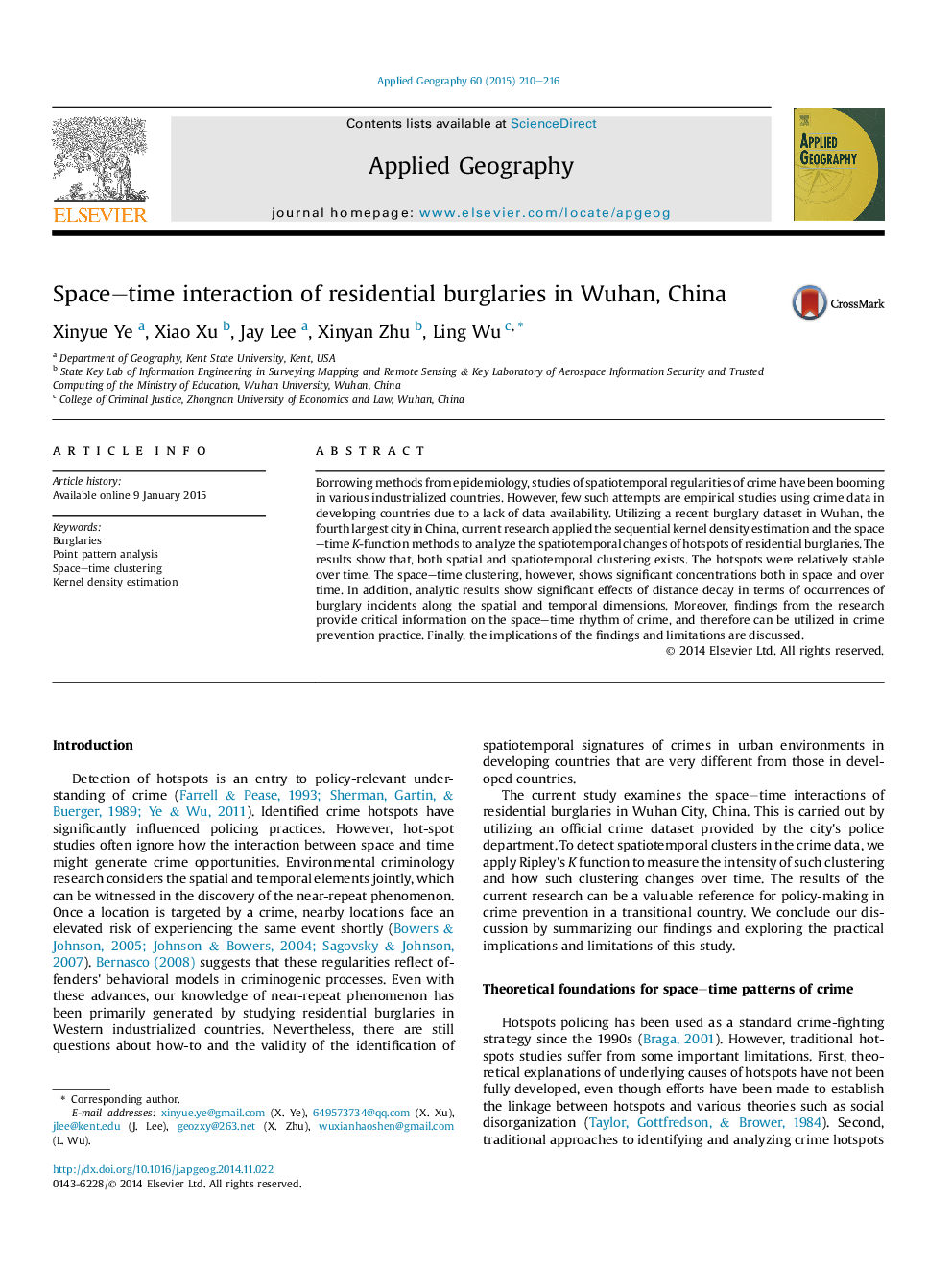| Article ID | Journal | Published Year | Pages | File Type |
|---|---|---|---|---|
| 6538535 | Applied Geography | 2015 | 7 Pages |
Abstract
Borrowing methods from epidemiology, studies of spatiotemporal regularities of crime have been booming in various industrialized countries. However, few such attempts are empirical studies using crime data in developing countries due to a lack of data availability. Utilizing a recent burglary dataset in Wuhan, the fourth largest city in China, current research applied the sequential kernel density estimation and the space-time K-function methods to analyze the spatiotemporal changes of hotspots of residential burglaries. The results show that, both spatial and spatiotemporal clustering exists. The hotspots were relatively stable over time. The space-time clustering, however, shows significant concentrations both in space and over time. In addition, analytic results show significant effects of distance decay in terms of occurrences of burglary incidents along the spatial and temporal dimensions. Moreover, findings from the research provide critical information on the space-time rhythm of crime, and therefore can be utilized in crime prevention practice. Finally, the implications of the findings and limitations are discussed.
Related Topics
Life Sciences
Agricultural and Biological Sciences
Forestry
Authors
Xinyue Ye, Xiao Xu, Jay Lee, Xinyan Zhu, Ling Wu,
